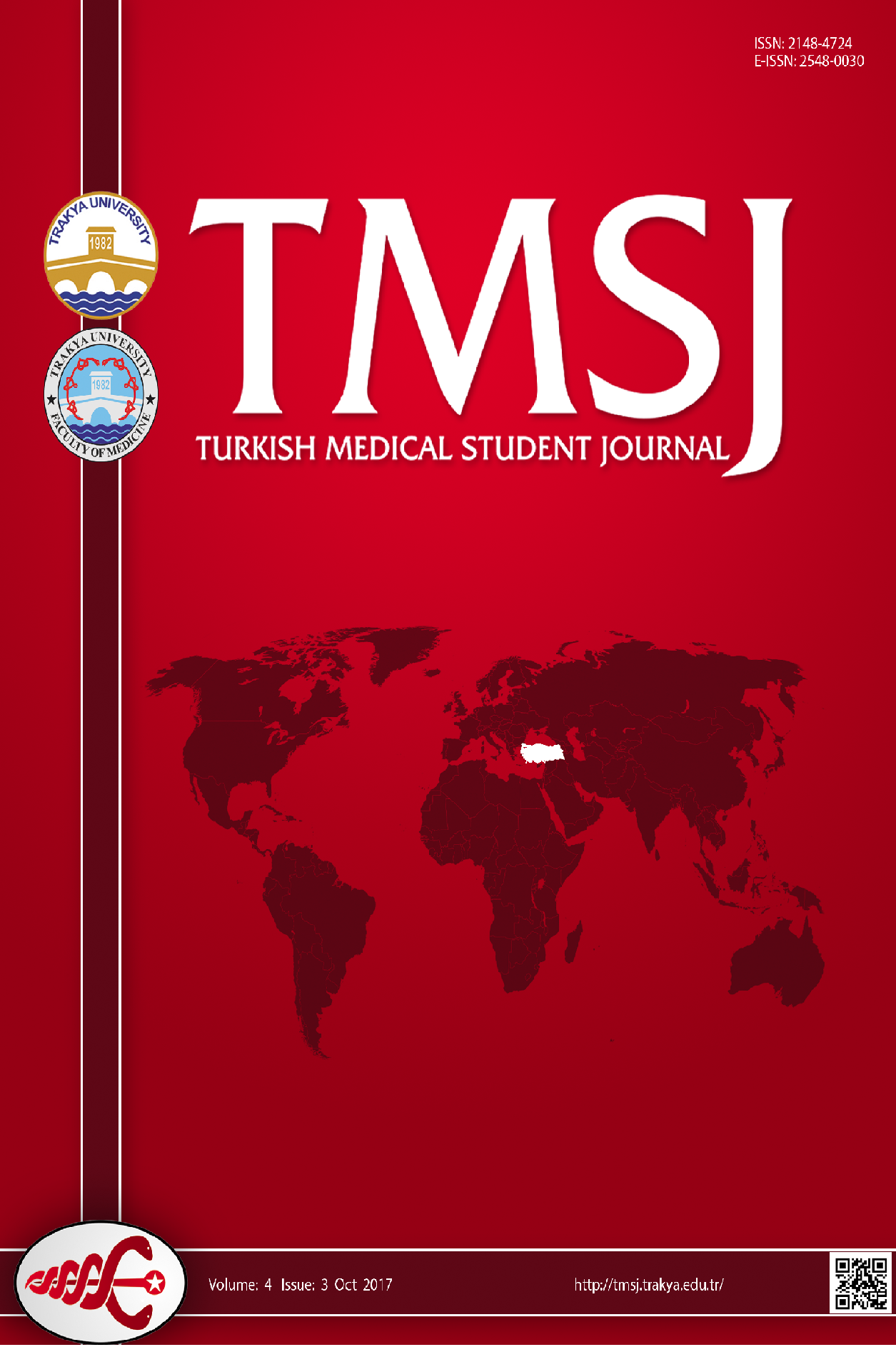
Turkish Medical Student Journal
Yazarlar: Nur Gülce İŞKAN, Ece ŞENYİĞİT, Begüm SÖYLEYİCİ, Mert ÇİFTDEMİR
Konular:-
Anahtar Kelimeler:Spinal fractures,Retrospective study,Traffic accidents
Özet: Aims: The aim of this study is to evaluate the data of the patients who are diagnosed with multiple level spinal fractures and to find out the most common level of fractures. Furthermore, this data will be examined regarding patients’ age, gender, fracture type, cause of the injury, and type of the treatment in order to get a baseline data to improve future outcomes. Methods: The data of 42 patients who were diagnosed with multiple spinal fractures in Trakya University Faculty of Medicine Department of Orthopedics and Traumatology in between 2012 and 2017 was analyzed retrospectively. In order to understand the incidence of multiple spinal fractures in both genders, type of the treatment and cause of the injury, descriptive analysis as arithmetic mean ± standard deviation, number and percentages, median (mini¬- mum-maximum) were used. Results: There were 42 patients including 32 (76.2%) men and 10 (23.8%) women with a mean age of 41 years. The most common level of injury was T12 (17.5%). The incidence of T11-L1 fractures is 62.1%. 20 (47.6%) of the fractures were caused by motor vehicle accidents. 26 patients were treated surgically and 13 patients had conservative treatment. Conclusion: Multiple level spinal fracture is a very important clinical problem. It is seen mostly in men and middle-aged population. Thoracolumbar transition (T11-L2) is the most affected region due to the biomechanics of vertebral column. The most common causes of the multiple spinal fractures are motor vehicle accidents and falls. Management of multiple level spinal fractures are based on surgical or conservative treatment modalities. Choosing the correct treatment option for a patient with multiple level spinal fractures depends on several factors.